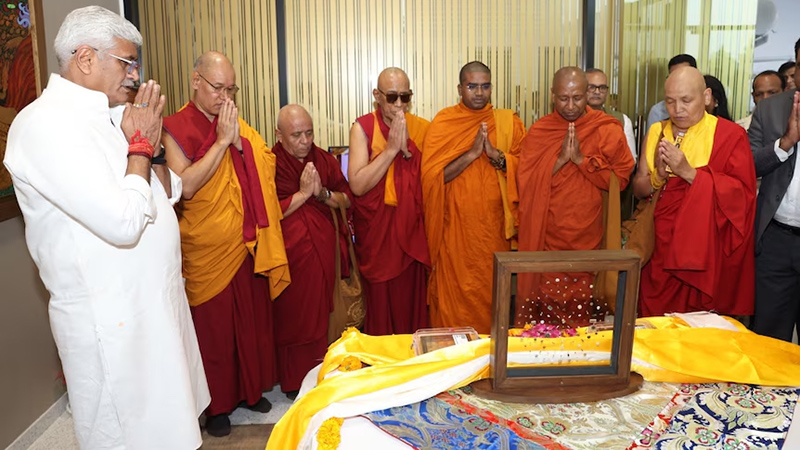The Piprahwa gems, a set of jewels connected with the Buddha, returned to India after 127 years from Hong Kong. It was earlier with the Peppé family in England.
Auction house Sotheby’s that acquired the collection from the family was to auction the jewellery comprising pearls, rubies, sapphires and gold sheets, when the Indian government intervened to stop the auction proceedings. After several rounds of talks, Sotheby’s agreed to return the collection to India. In a statement, Sotheby’s said that it was “grateful to the Peppé family for having safeguarded the gems and for having worked with us – and with the Government of India – in good faith to achieve this historic outcome”.
Mumbai-based conglomerate Godrej Industries Group has acquired the jewels, said Sotheby’s, at the end of a two-month-long negotiation between the owner and the new buyer, besides the Indian government. Godrej hopes to publicly display the jewellery in India.
Indian Prime Minister Narendra Modi said that it was a “proud and joyous moment” and a victory for the country’s cultural heritage.
Pirojsha Godrej, Executive Vice Chairperson of Godrej Industries Group, said that they were deeply honoured to contribute to the historic moment. “The Piprahwa gems are not just artefacts – they are timeless symbols of peace, compassion, and the shared heritage of humanity,” he said.
In 1898, the gems were unearthed by English estate manager William Claxton Peppé from a stupa in Piprahwa, which is near the Buddha’s birthplace in India. Beside the gems were the bone fragments of the Buddha in an inscribed urn.
Peppé handed over most of the gems to the colonial Indian government then, while the bone relics were given to the Buddhist King of Siam (Rama V). Some more finds, including urns and relics, were sent to the Imperial Museum of Calcutta.
The Buddha’s bone fragments, however, were later distributed to countries such as Thailand, Sri Lanka, and Myanmar. But the jewellery collection of 300 gems referred to as ‘Piprahwa gems’ stayed in a British private space for more than a century, until Sotheby’s took charge of the collection. – editor@nrifocus.com


Leave a Reply